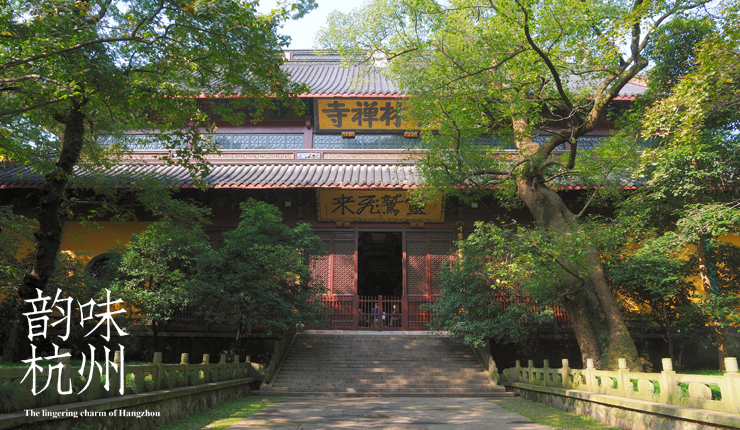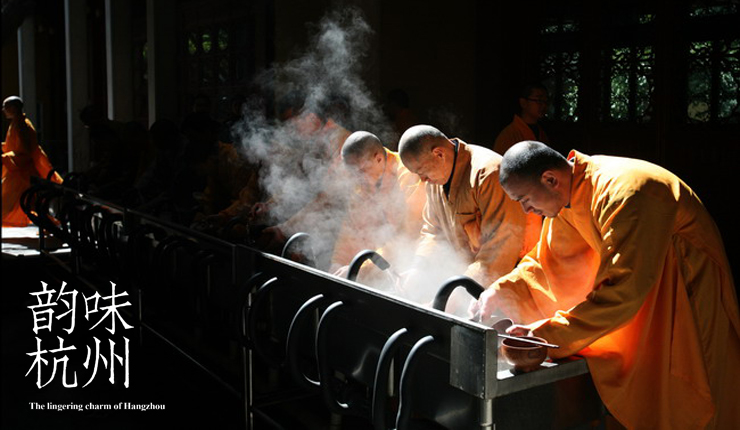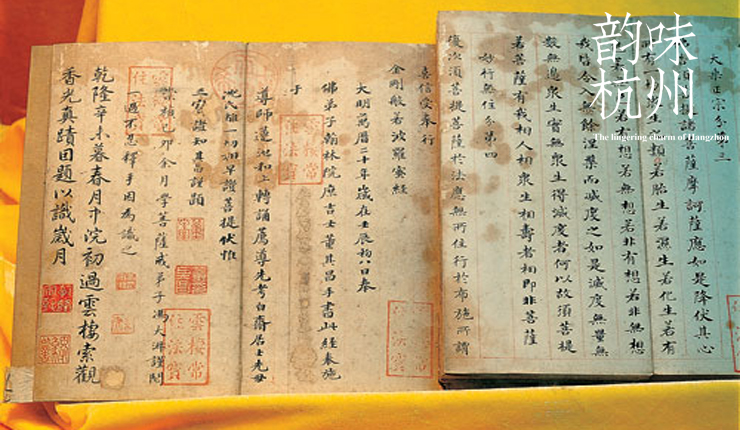

When Lingyin Temple was newly built, Buddhism was not very popular. Everything was just coming into being. In Southern Dynasties, Emperor Wu of Liang granted land and expanded the temple. In the sixth year of Dali Period in Tang Dynasty (A.D.771), the whole Lingyin Temple was renovated and thereafter attracted endless stream of pilgrims. However, it was later destroyed due to “Buddhism Disaster in Huichang Period” in late Tang Dynasty. In the Five Dynasties, QIAN Liu, King of Wuyue, invited Master Yongming Yanshou to reinvigorate Buddhism, and newly built stone Dhanari columns, Buddha pavilions, Dharma halls and Hundred-Feet Maitreya Pavilion. He gave a new name to the temple – Lingyin New Temple. In Southern Song Dynasty, Hangzhou was made the capital. Emperor Gaozong and Xiaozong frequently visited Lingyin Temple and presides the affairs of the temple. In the twenty-eighth year of Kangxi Period in Qing Dynasty (A.D.1689), Emperor Kangxi travelled to South China and gave Lingyin Temple the honorary title “Yun Lin Zen Temple”.
At present, along the central axis of Lingyin Temple are Hall of the Heavenly Kings, Grand Hall of the Great Sage, Hall of Medicine Budda, Zhi Zhi Hall (Buddha dharma hall) and Huayan (Avatamsaka) Hall. Besides, Hall of 500 Arhats, Hall of Master Ji Gong, Liandeng Pavilion, Huayan (Avatamsaka) Pavilion, Great Compassion Hall, Abbot’s Room and other architectures are at the sides of the central axis. Covering an area of 130 mu, the whole temple is magnificent in size and well-designed in structure. The Buddha of Sakyamuni in Grand Hall of the Great Sage is modeled after the Buddha of Zen of Tang Dynasty. It is spliced by 24 camphorwood carvings. With a height of 24.8m, the Buddha of Sakyamuni has an air integrating solemnity and vitality, which is rarely seen in China.
(Source: Official Website of Lingyin Temple)



